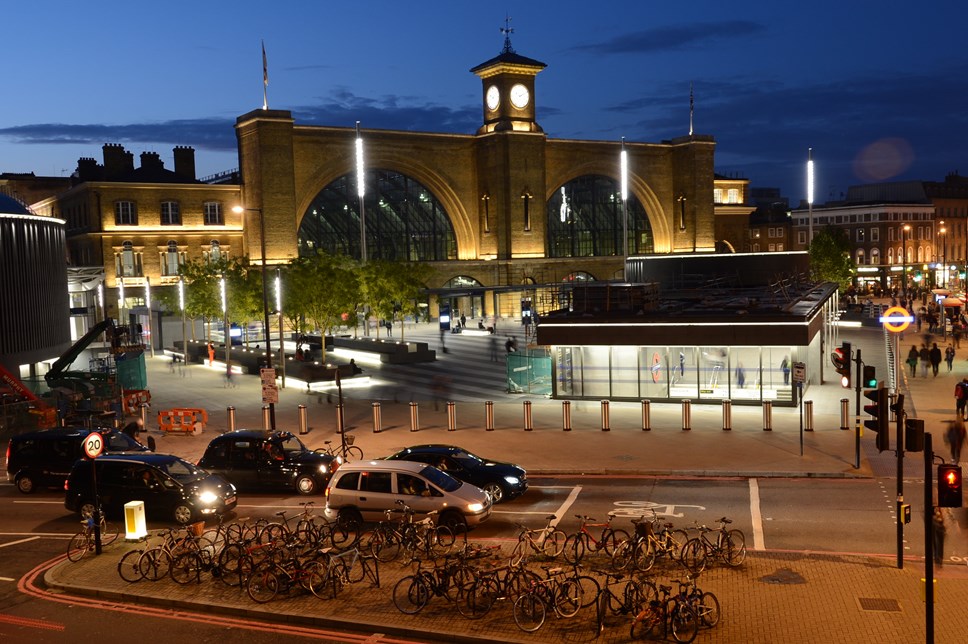
Labour conference warned that Britain’s on the precipice of a car-led recovery
- Speaking at a virtual Labour Party Conference fringe event on rail and decarbonisation, a senior rail executive has warned that Britain is on the verge of a car-led recovery
- An economic recovery built on increased use of road vehicles would be devastating to the nation’s net zero carbon ambitions
- Increased investment in the railways and reform of rail fares as the country emerges from COVID can incentivise people to make greener choices, the rail industry says
Britain stands on the precipice of a car-led recovery from the COVID pandemic a senior rail executive has warned today.
Speaking at a discussion on the future of high-speed rail in Britain at the virtual Labour party conference fringe, Chief Strategy Officer for the Rail Delivery Group which represents train operators, Andy Bagnall said:
“The data is clear and should raise alarm bells, the country stands on the precipice of a car-led recovery from COVID that risks dealing a knockout blow to the nation’s target of reaching net zero carbon emissions by 2050.”
Mr Bagnall’s comments follow reports from the European Environment Agency that the easing of lockdown measures has seen air pollution spike across Europe’s cities. In Britain, the latest figures from the Department for Transport show that growth in car use is out-stripping other modes of transport as people begin moving again.
From 7th-13th September, the number of cars and lorries on the road was almost back to normal with an average of 96% of pre-COVID traffic levels and exceeding pre-COVID levels at weekends. Conversely, the number of people using trains and buses remains a fraction of what they were before the pandemic at 39% and 57% respectively, despite work from transport operators to make the railway COVID secure.
As part of their Safer Travel Pledge, rail companies have increased cleaning on trains and at stations and are running longer services to facilitate social distancing. Early evidence from studies in Britain, France and Germany also suggests that the risk of transmission of COVID-19 onboard trains is very low due to measures as part of the pledge, such as regular cleaning, as well as ventilation systems and the requirement for people to wear face coverings.
The fringe event, hosted jointly by the rail industry and the High-Speed Rail Group saw the launch of proposals on how the transport sector can be decarbonised and how rail can support a green recovery from COVID.
Andy Bagnall continued,
“Rebuilding the fares system and making ticketing simpler is essential to get people out of traffic jams and onto cleaner, greener trains. We want to work with government to make this a reality.”
Projections from KPMG show that a simpler fares system that enables tap-in-tap-out travel across the country, tackles crowding on Britain’s busiest services and allows discounts on 80% of walk-up fares could increase the number of rail journeys by 300million over the next ten years cutting CO2 emissions by 1.2 million tonnes.
Contact Information
Niall McGourty
Notes to editors
- Read Building Back Better: The green case for rail investment after the pandemic here. Proposals include:
- A national high-speed rail spine, which builds on the sustainable credentials of the railway while also creating jobs across the nation
- Investment in zero carbon infrastructure which will support a rolling programme of electrification
- More rail freight capacity to reduce carbon emissions and decongest the road network
- Growing rail’s market share in the domestic long-distance market by improving connections between Scotland and the north of England to the high-speed network
- A reformed, up to date fares and ticketing system to incentivise more passengers to use the network
- A change in transport tax policy to create a level green playing field which reflects the environmental impact of the transport mode.
2. The full list of panellists were, Tan Dhesi MP (Shadow Rail Minister), Maria Machancoses (Midlands Connect); John Downer (HSRG), Andy Bagnall (RDG) and Robert Nisbet (RDG) as Chair.
3. Latest DfT transport use statistics are available here
4. Early research into the transmission of COVID-19 onboard trains has had some promising results and the risk appears to be low.
- In Britain, RSSB calculated that on a train carriage at half capacity, the risk of infection to a passenger, with mandatory face coverings in place, is 1 in 20,000 in the context of the number of confirmed infected people across the country according to ONS (0.05%). Without face coverings, it is around 1 in 11,000. – Read more
- In France, analysis showed that high-speed and intercity trains replace all air every 6 to 9 minutes which allowed French authorities to lift capacity restrictions on board. In Britain, over 80% of all trains replace the air on board a train every 6 minutes.– read more
- In Germany, a study showed no cases contracted on board intercity trains based on German track and trace data and the infection rate for train staff was significantly below the national average. This is, in part, attributed to the high air-exchange rate on board trains compared to many other indoor environments.
- Working with RSSB and top academics we are commissioning more research into the risk of COVID-19 transmission on trains.
